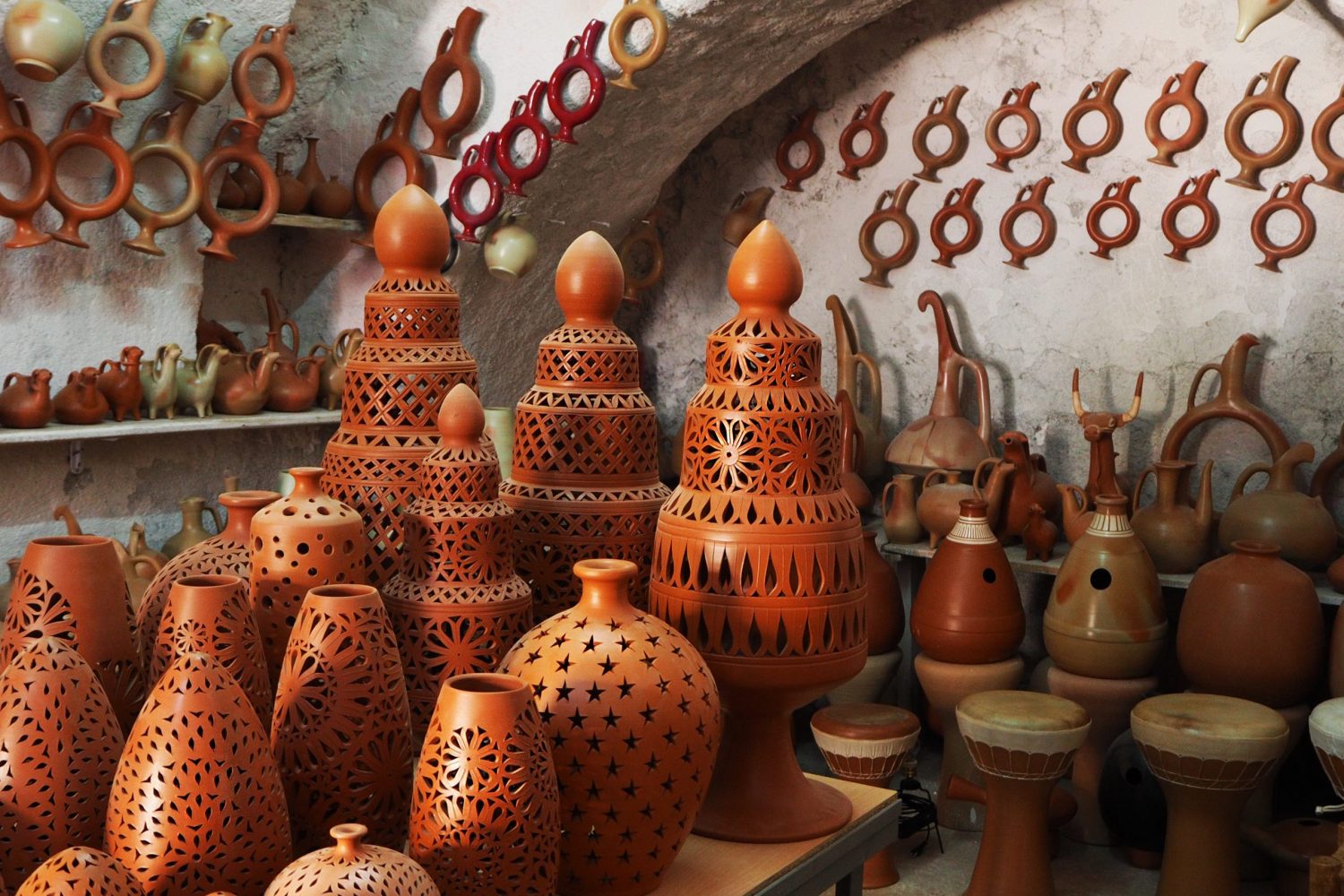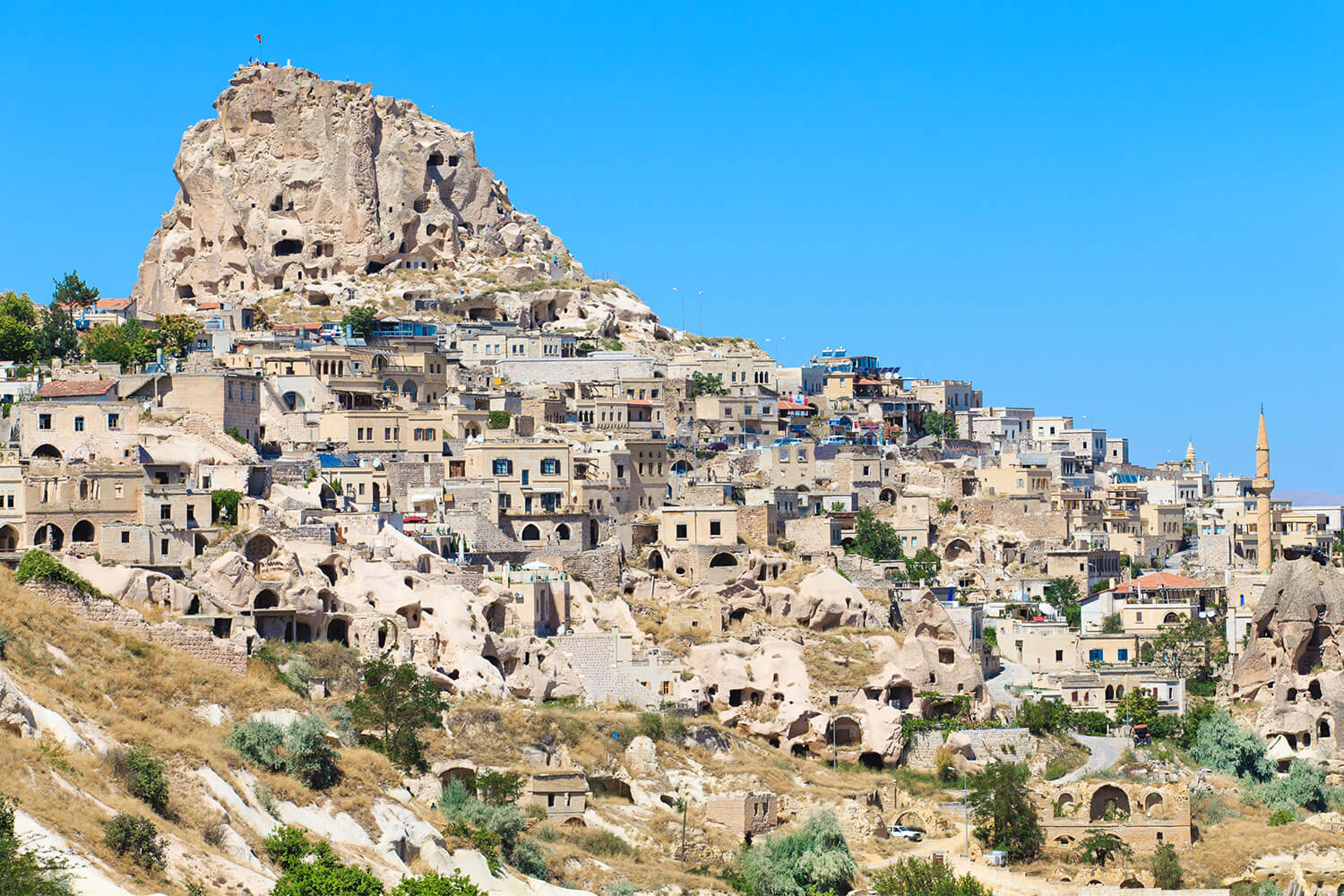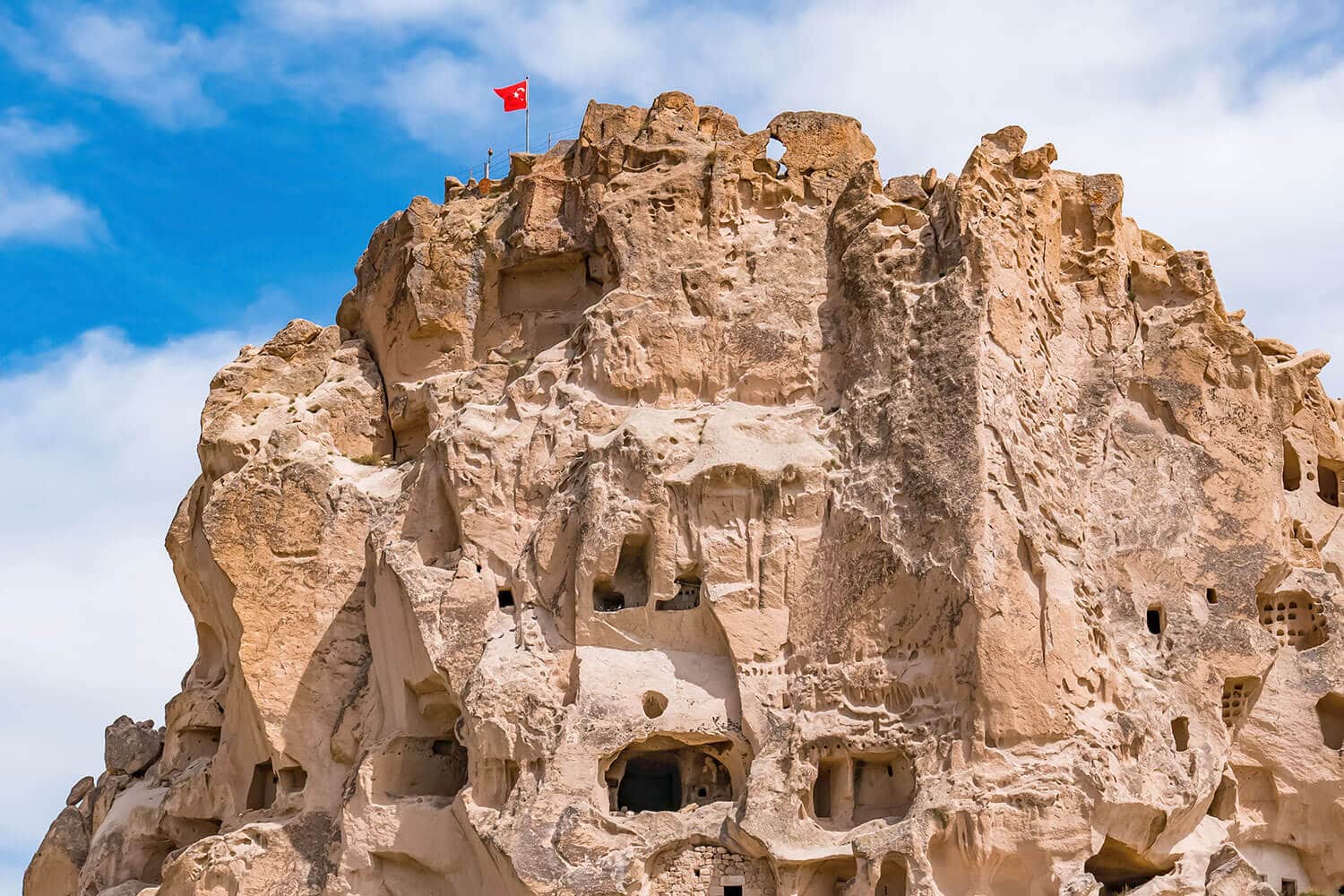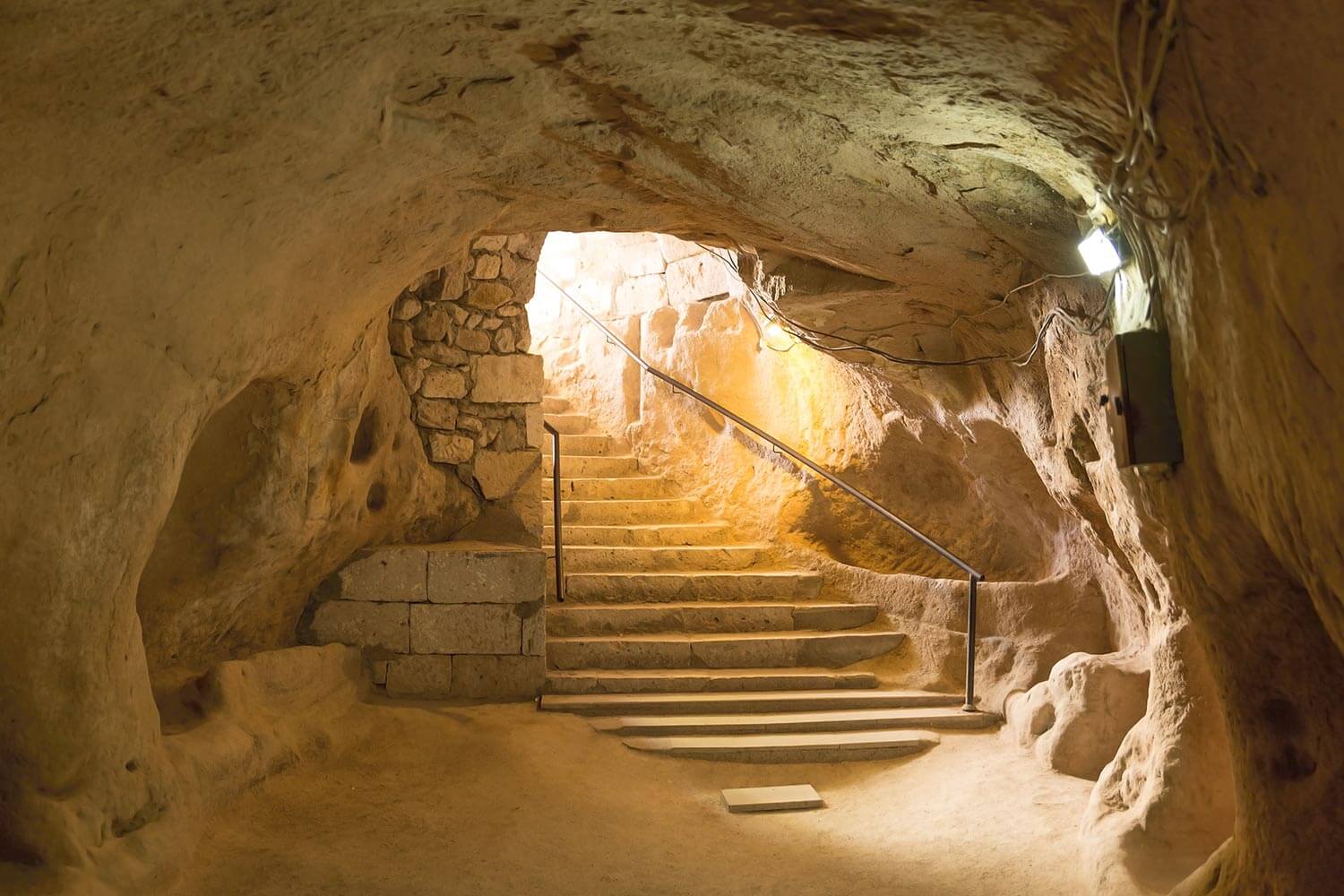Goreme Open Air Museum is one of the largest open-air museums in the world, that is included in UNESCO World Heritage List. In an amazing ancient city, there are numerous houses, churches, monasteries, graves, and schools were built by carving the rocks thousands of years ago. You will be amazed by the ornations and paintings on the walls and ceilings of these constructions that are protected through the ages. Many religious scenes that hold importance for Christianity are depicted in the paintings that survived until the present day. With the assistance of professional guides, you will learn a lot of interesting stories in the Goreme Open Air Museum.
After this brief introduction, we can mention our recommended places to see in Goreme Open Air Museum. St. Basil’s Church, a famous church covered with magical colors and ornations, was built to honor bishop St Basil, an important figure of Christianity who was born in Kayseri. This church may be the highlight of your trip. Apple Church is another great construction with perfect decorations along with the Snake Church where you can enjoy many interesting figures and paintings in detail. In Buckle Church and Sandals Church, you will see paintings and depictions of the scenes from the life of Jesus and you will understand why we recommend you to see these places so much.













